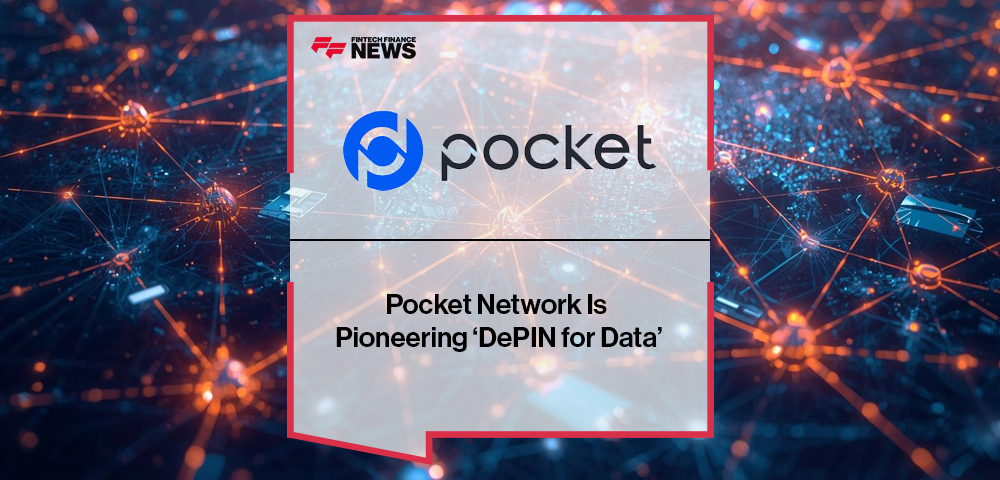Data is the common factor 31 billion dollars Decentralized Physical Infrastructure Industry (DePIN). From wireless devices, physical storage, and decentralized maps to oracle networks, data is the payload and product across DePIN sectors.
Data DePIN creates a data plane where the same old Internet has fewer bottlenecks, creating a decentralized, user-owned data marketplace. Some protocols, e.g Pocket net,Explain how the user-owned data plane works at the edges to provide,data services.
Understanding the Data DePIN landscape.
“Data DePIN” involves producing, transmitting, verifying and pushing data across DePIN segments. This includes historical searches and indexing queries for public datasets, blockchain instances, and AI model output.
Simply put, “DePIN for data” monetizes the pipelines that produce and serve data, making the data plane a market.
Unlike traditional API aggregation, the DePIN market is transparent and auditable. All proofs of work are available on-chain, making payments smoother. This helps define costs, measure performance across suppliers and maintain a common record across the ecosystem.
“DePIN for data” technology coordinates work, with data relays directing work and payment for each minute output. In other words, it organizes the data pipelines that produce, verify, and deliver bytes of data.
Pocket Network is a classic case study within the “Data DePIN” ecosystem to understand how it actually works.
Case study of enclave network
The Pocket Network is a decentralized access layer for open data. Since its launch in 2020, Pocket has provided data for over 50 series and handled billions of relays, culminating in over 1.5 billion Relays every day.
As an open data infrastructure, Pocket Network coordinates gateways and independent node operators to serve read/write requests on-chain, paying costs and POKT token rewards. Currently, Pocket’s Shannon architecture has been ported to the Cosmos SDK, enabling inter-blockchain communications (IBC) interoperability and unlocking verifiable business through transparent on-chain economics.
Pocket Network fits into the “DePIN for Data” framework at the data layer – where users control endpoints through service providers running nodes, indexers and modular endpoints. Each data request is considered work and is settled on-chain, with Shannon deploying the burning technology for POKT tokens, creating a pay-for-work model with auditable records.
Pocket roles in DePIN
Primarily, there are four functions within the “DePIN for Data” ecosystem: access, provisioning, accounting, and assurance.
Accessibility refers to the devices that users own, provisioning is the data layer managed by independent operators (such as nodes, indexers, and AI models), accounting is an on-chain calculator that treats data requests as work, and assurance ensures high data quality through archival checks.
Pocket’s Shannon architecture has identified these actors within the “DePIN of Data” landscape.
A small server managed by the user interacts with the protocol while the operators are running Data source For full or archive nodes, indexers, LLM endpoints, or public HTTP APIs. the RelayMiner It turns usage into verifiable receipts, and links them to on-chain accounting to transparently pay data suppliers.
Pricing and data services
Pocket Network’s flat rate is $1 USD for 1 billion CU (compute units), a standardized unit of work, paid in POKT tokens. When applications burn POKT for use, the protocol releases POKT to pay the supply, saving the burn structure, enabling an auditable cost-to-work service.
To enhance reliability, offer pocket mesh Archival checks and Error semantics To ensure that legacy data endpoints cannot corrupt results and ensure consistent client behavior.
In addition to blockchain RPCs, Shannon enables multi-chain RPCs via EVM and Cosmos, adds HTTP/public data, and logs AI endpoints. For example, it helps with balances, smart contract readings, token transfer records, and more Ethereum, BNB Smart Chain, ribbed, a baseand the Cosmos family, e.g Akash and until.
Pocket also helps with token listings, metadata, NFT collection details, and project summaries via indexers Stargazing, Router protocoland Ask, my dear. It provides prices/oracle readings, gas estimates, network telemetry and bridge status This protocol, Excess fluidand Akash. Pocket also provides data for AI models and privacy-preserving queries with services Deep Sick and Quinn.
Building the future of “DePIN for data”
In October 2025, an Amazon Web Services (AWS) data center in Northern Virginia suffer A major outage, affecting several cryptocurrency platforms such as Coinbase and artificial intelligence platforms such as Perplexity AI. But this is not the first time. In April, the AWS Center is also in Tokyo Face it An outage that disrupted services at at least eight cryptocurrency exchanges.
By creating the “DePIN for Data” Pocket Network, the protocol effectively contributes to creating a decentralized alternative for handling data services. Thanks to decentralized technical guardrails, the Pocket Network ensures that applications are not subject to single points of failure as data is routed through a distributed set of nodes.
Shannon’s upgrade to the Pocket Network demonstrates that a user-owned data plane is now practical. So, users can keep their machines running, route data across multiple vendors, perform data quality checks, and tie prices to the business for transparency and auditability.
As wireless devices turn scattered information into addressable data, maps turn user-generated snapshots into tiles, decentralized computing turns GPUs into AI model endpoints, and distributed storage turns publicly available blockchain state into queryable answers, the DePIn data layer shows that the future belongs to users with protocols like Pocket Network facilitating the process.





